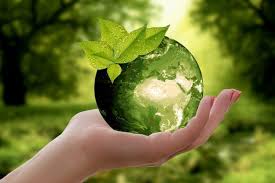Publisher: Maaal International Media Company
License: 465734
How will the world provide $3 trillion annually for climate change?
In light of the new climate trends and recent statements made by Janet Yellen, US Treasury Secretary, regarding the need for massive investments of up to $3 trillion annually to transition to a sustainable economy, some are questioning the feasibility of this approach at a time when the world is suffering from serious economic and social challenges, as well as the ability of the world’s countries to provide this amount, which means that it will invest $75 trillion, as Yellen explained.
Securing $3 trillion annually is a very ambitious goal and a huge cost that exceeds the capacity of countries, especially in light of the current economic conditions, as figures indicate that this amount is equivalent to about 14% of the US GDP, which represents a huge financial burden that is difficult for many countries to bear, and this raises questions about the realism of allocating this huge amount of financial resources at a time when many countries are suffering from financial deficits and increasing debts.
The negative economic impacts on traditional sectors resulting from the rapid shift to a green economy may lead to negative economic repercussions on traditional sectors such as oil and gas, where millions of people work in this sector in the United States alone, and the sudden transition to a green economy may threaten these jobs and lead to widespread unemployment, causing serious social and economic impacts that can be dealt with more wisely.
اقرأ المزيد
Climate Justice
There are those who believe that the greatest historical responsibility for carbon emissions lies with industrialized countries, as they have been the main source of carbon emissions since the Industrial Revolution until today, and industrialized countries historically bear the largest share of emissions that led to climate change. Therefore, it is fair that developing countries be given some leeway in emissions to achieve the same levels of economic growth achieved by developed and industrialized countries. According to the United Nations Environment Program, the United States of America is responsible for 19% of historical carbon emissions from 1950 to 2021, and the European Union is responsible for 13% from 1950 to 2021.
The uncertainty of economic returns referred to by some critics who claim that economic returns from investments in the green economy are not guaranteed, and achieving profitability from these projects may require a long time of up to 30 years according to a report by the International Energy Agency.
This long wait may not be sustainable for many investors and countries, especially in light of the current economic challenges, in addition to the challenges of financing and financial sustainability, as relying on the private sector to secure the necessary financing for the transition to a green economy may be unsustainable in light of global economic changes and financial instability. Regarding the difference in national priorities, and given that more than 700 million people live below the extreme poverty line according to the World Bank (less than one dollar a day), developing countries may see their priorities as related to achieving economic growth and social development before focusing on environmental transformation. These countries need to improve living standards and basic infrastructure before environmental transformation, and allocating huge resources for environmental transformation may not be their top priority at this time.
In light of the current economic and social conditions, the trend towards allocating $3 trillion annually to the transition to a sustainable economy raises wide controversy, and critics point to the high cost of the negative economic impacts on traditional sectors in the event of this transformation, in addition to the uncertainty of economic returns, as well as the challenges of financing and the difference in national priorities as reasons that require caution in making such a decision.
In addition, providing this huge amount annually in light of the presence of more than 700 million people below the poverty line is the biggest challenge facing the world in achieving a balance between economic development and environmental sustainability.







